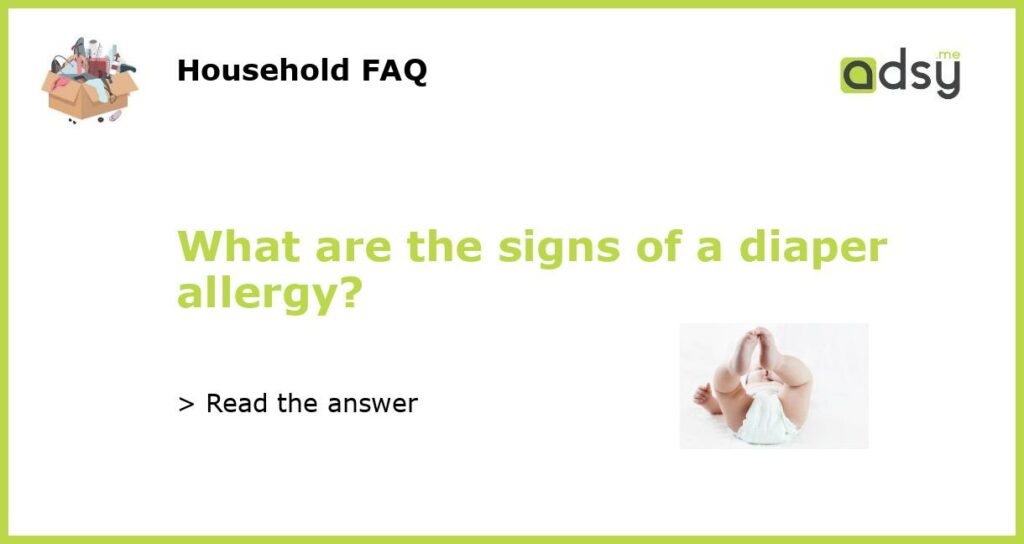Common signs of a diaper allergy
A diaper allergy can be a cause of concern for parents, as it can lead to discomfort and irritation in babies. It is important to be able to recognize the signs of a diaper allergy in order to provide the necessary treatment and ensure your baby’s comfort. Here are some common signs to look out for:
Redness and rashes
One of the most obvious signs of a diaper allergy is redness and rashes in the diaper area. The skin may appear inflamed, and there may be raised bumps or blisters. These rashes may not go away with regular diaper rash creams and ointments.
Itching and discomfort
Babies with a diaper allergy may show signs of itching and discomfort. They may try to scratch the affected area or seem restless and irritable. Sometimes, this itching can lead to even more severe rashes and skin breakdown.
Swelling and inflammation
In some cases, a diaper allergy may cause swelling and inflammation in the diaper area. This can make the skin look puffy and can be accompanied by pain or tenderness. If you notice any signs of swelling, it is important to consult a healthcare professional.
Dry and scaly skin
Another sign of a diaper allergy is dry and scaly skin in the diaper area. The skin may appear rough and may even peel or flake off. This dryness can further contribute to the discomfort and itching experienced by the baby.
Persistent diaper rash
If your baby’s diaper rash does not seem to improve with typical diaper rash treatments or if it keeps coming back, it could be a sign of a diaper allergy. A persistent diaper rash can be a cause for concern and should be evaluated by a healthcare professional to determine the underlying cause.
In conclusion, recognizing the signs of a diaper allergy is crucial for providing the necessary treatment and ensuring your baby’s comfort. If you notice any of these common signs, it is advisable to consult a healthcare professional to determine the underlying cause and explore treatment options.






